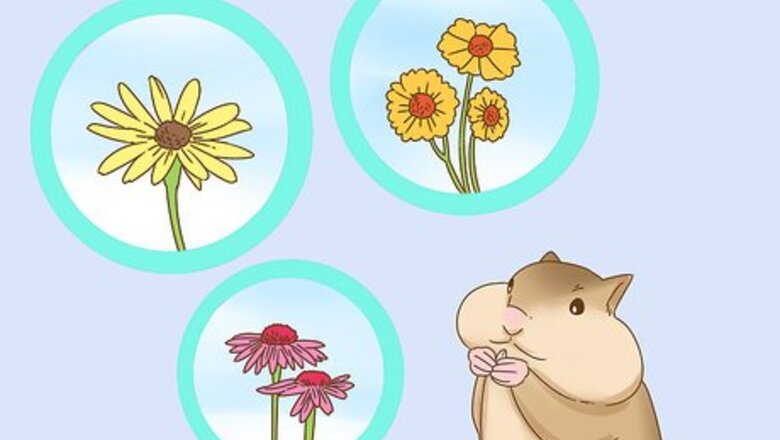
views
Planting Inviting Greenery
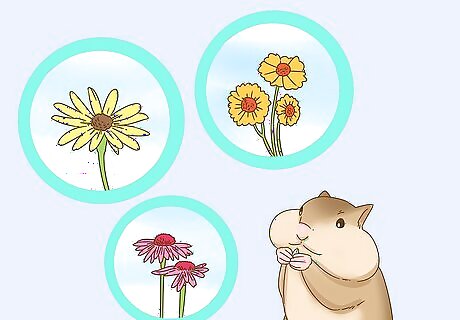
Choose seed-bearing plants for your garden to feed the chipmunks. Try flowers like black-eyed Susans, coneflowers, sunflowers, and Coreopsis. These flowers provide seeds that will draw both chipmunks and songbirds to your yard. Don't clear these plants out as the weather gets colder. The seed heads are what the chipmunks will munch on in the winter.
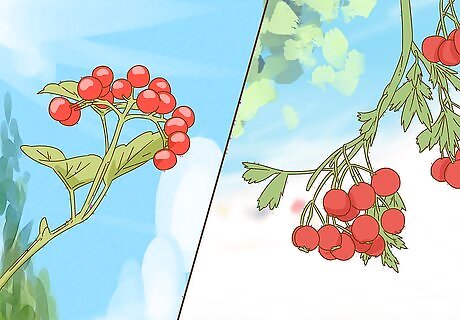
Add fruit-bearing plants for chipmunk food. These plants don't have to be ones that you can eat. You can add flowering crabapples, flowering dogwood, highbush cranberry, and hawthorns, just to name a few. However, if you don't mind sharing, you can also plant fruit you can eat, too, such as pears, apples, peaches, and cherries. Bayberry, chokeberry, and elderberry are also options.
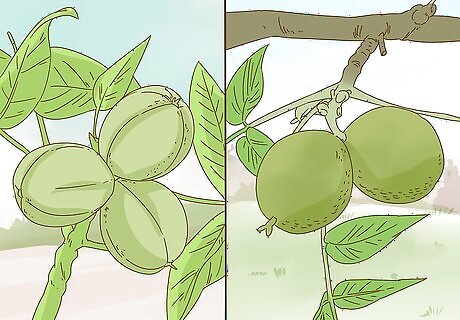
Put in nut-bearing plants for more food. Hickories, beeches, oaks, and black walnut are all nuts chipmunks will enjoy. Of course, these trees will take time to grow to maturity so you will need to be patient if you plant one of these. You can also purchase small trees from nurseries and garden centers so you don't have to wait as long for your trees to grow.
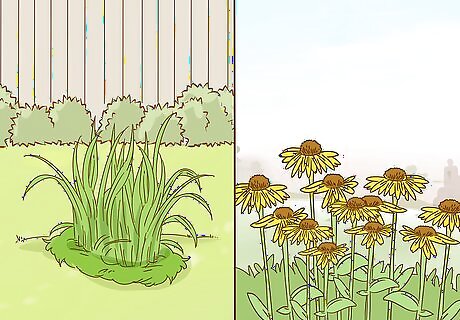
Put in patches of grasses and wildflowers for shelter and to entice insects. Insects love unmowed patches, but if that's not feasible for you, you can also just use decorative grasses and wildflowers that will come back each year. Insects will be drawn to these areas, and then chipmunks will be drawn to your yard. Chipmunks may also use these areas for shelter.
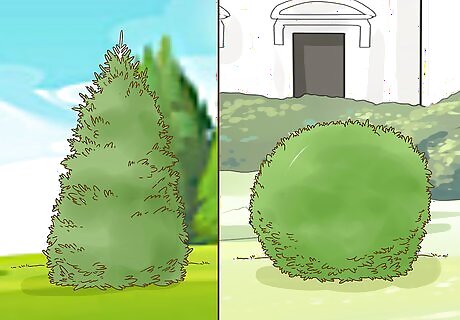
Choose evergreen trees and shrubs for your yard to provide shelter. These plants stay green all year, so they provide great hiding places for animals like chipmunks. Plus, you'll get to enjoy their lovely green leaves all year, too. Some evergreens include furs, pines, and cedars.
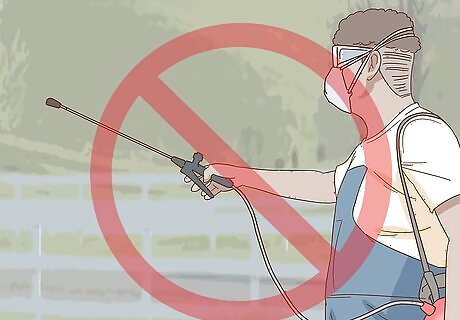
Avoid using pesticides in your yard. Pesticides will drive off insects chipmunks feed on. Plus, they could harm the chipmunks if they eat enough insects that have been doused in the insecticide. You should avoid herbicides for the same reason. Stick to natural pesticides and herbicides, like diatomaceous earth.
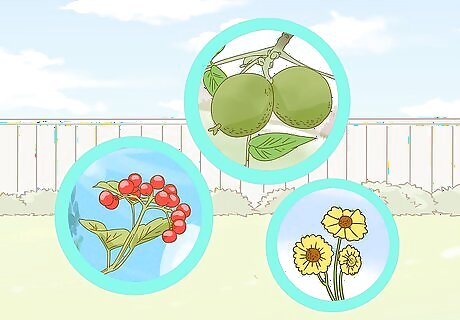
Aim for diversity in your plant life. Diversity will draw a variety of wildlife to your yard, but it will also give chipmunks choices in what they eat and use as a shelter. Plant different types of seeds, nuts, flowers, and so on to entice these critters into your backyard.
Providing Food and Water

Use a birdbath, a bowl, or a pond to provide water for chipmunks. All animals need water, and your resident chipmunks are no different. They'll use the water for bathing and drinking. They don't need a lot of water, as long as you fill it up regularly. If you live in an area prone to mosquitoes, change the water out regularly or use a water feature that creates moving water to help prevent mosquitoes from breeding. Plus, the sound of running water will bring chipmunks and other animals into your yard.
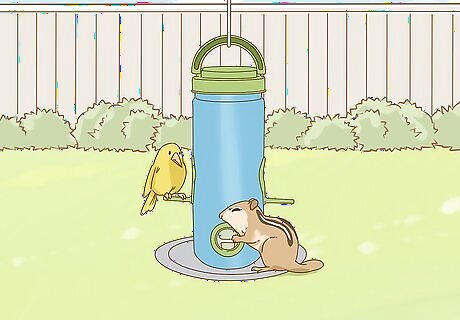
Set out birdfeeders for both the birds and the chipmunks. Chipmunks, like squirrels, can easily climb bird feeders to get at the tasty treats. Songbird seed mixes have plenty of seeds that chipmunks will love and enjoy so fill your birdfeeder often to draw both birds and chipmunks to the yard. Chipmunks particularly enjoy sunflower seeds so try picking those for your birdfeeder. If seeds spill on the ground, leave them there for your little friends.
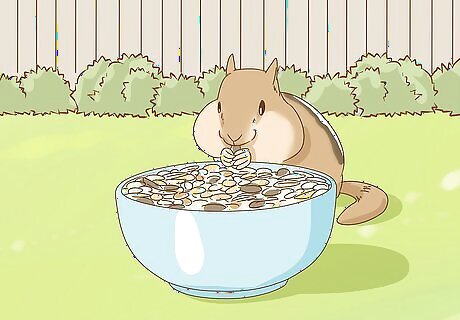
Leave out nuts, seeds, or other chipmunk favorites in bowls. Chipmunks are fond of nut butters, for instance, as well as pumpkin seeds, raisins, nuts, and oatmeal and other grains. You can put these out in small bowls around the yard to draw chipmunks in. Keep in mind, these may draw other animals, as well, such as squirrels, rats, and rabbits. You can also try other dried fruits or even fresh fruit.
Creating Shelter for Your Chipmunks
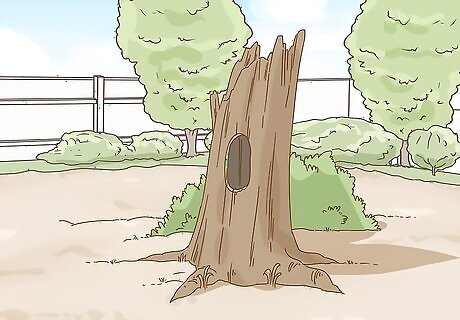
Let dead trees and bushes stay where they are for a simple shelter. If you don't mind a dead tree trunk in your yard, leave it where it is when it falls. A trunk is a great place for chipmunks to hide out. Plus, they can build nests in the knots and holes. This step would work best if you have a large backyard that backs up onto woods, as it will look less out of place. To make it more aesthetically pleasing, try adding colorful glass or plastic balls to the trunk or tucking flowers into nooks and crannies. The dead wood will also house food for the chipmunks, such as insects.
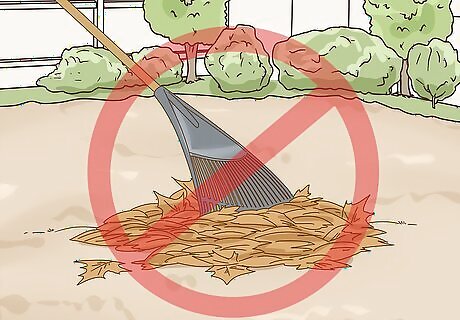
Skip raking the leaves in the fall to provide food and shelter. The leaves provide an area for insects and other chipmunk food, so if you rake them up, you're less likely to draw little friends to your yard. Plus, they may use the leaves for warmth and housing. If you don't want to leave your whole yard unraked, try keeping a little pile of leaves in an inconspicuous corner.
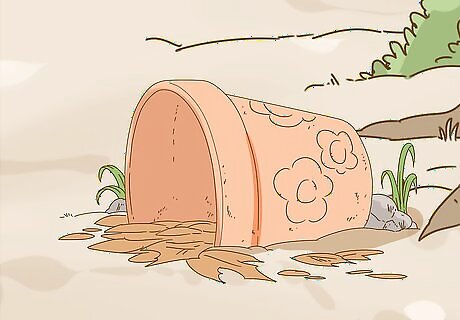
Use old clay pots to create a more attractive shelter. Turn the pots on their sides. Try half burying them in the ground so they stay in place. Make a geometric arrangement out of the pots for a more aesthetically please look. You could even paint the pots in fun patterns for an artistic flair.
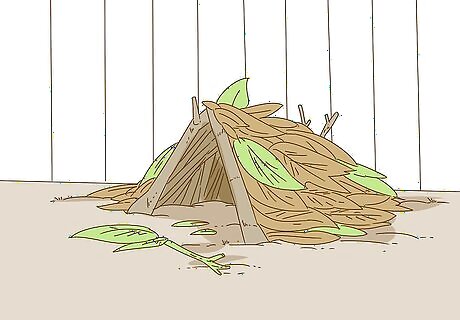
Make a brush and leaf shelter in a corner of your yard. You can create a simple shelter just by piling leaves and branches in a corner of your yard. Chipmunks will burrow under it in the winter for warmth and protection from predators. For a more elaborate shelter, tie branches together with twine at the top to make a teepee or tent shape and then pile more leaves and branches around it to create the shelter. You can also crisscross large branches across the bottom of the shelter. As you build up, switch to smaller and smaller branches until you've created a dome with the branches. Use evergreen branches on the top to keep the snow out in winter. You can also add non-wood items to your shelter, such as plastic pipe and flower pots.
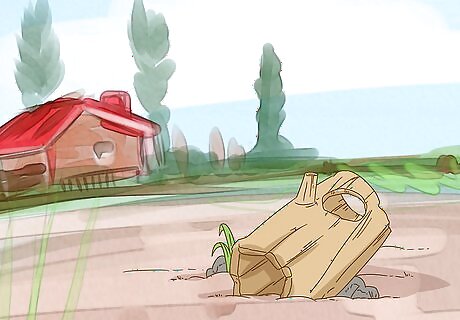
Set shelters away from your house to help animals feel safe. If you put shelters too close to your windows and doors, chipmunks may get spooked when you're going about your normal life. Instead, set them in the back of your yard to help draw the animals in and let them feel secure in your yard.




















Comments
0 comment